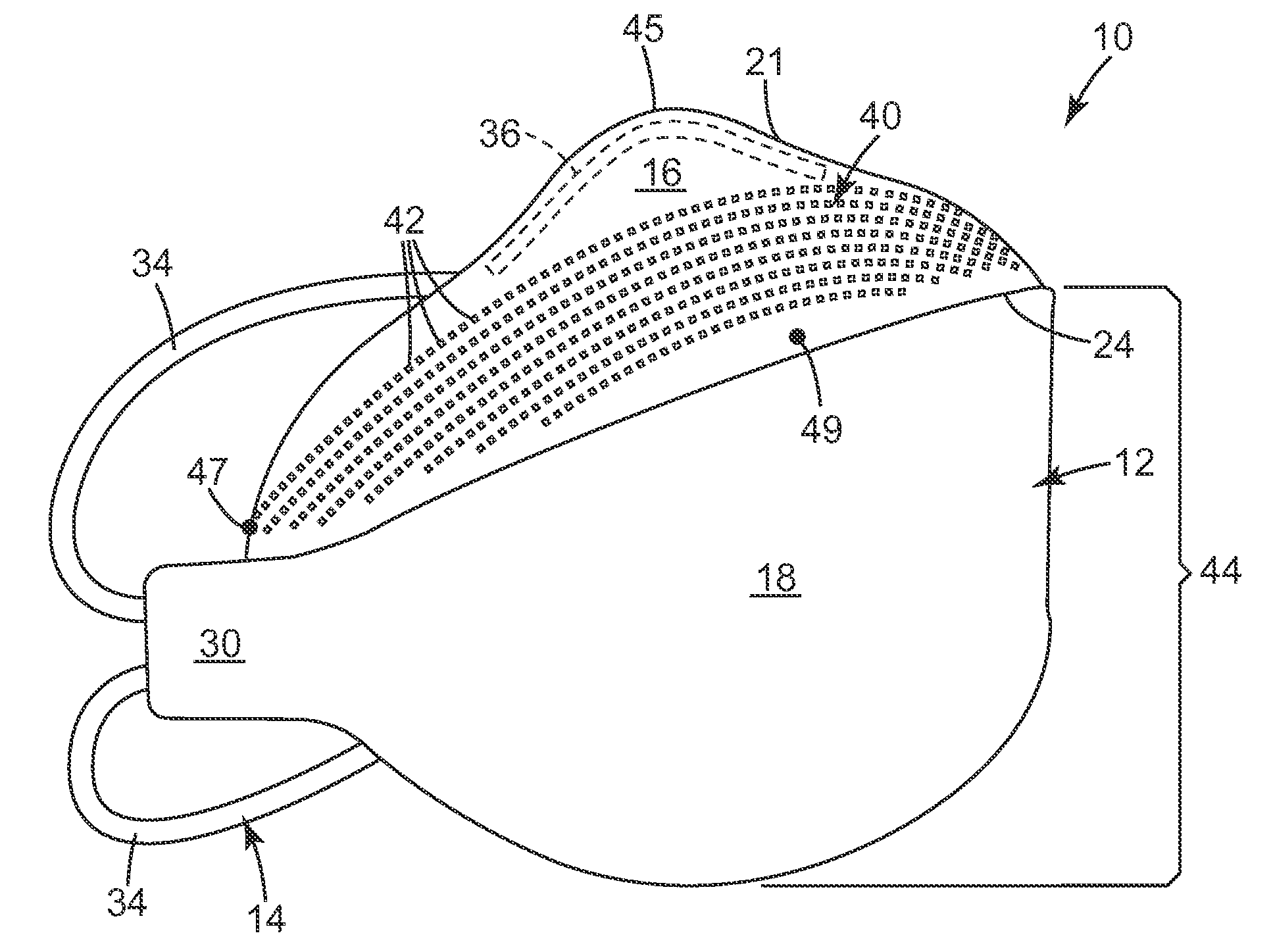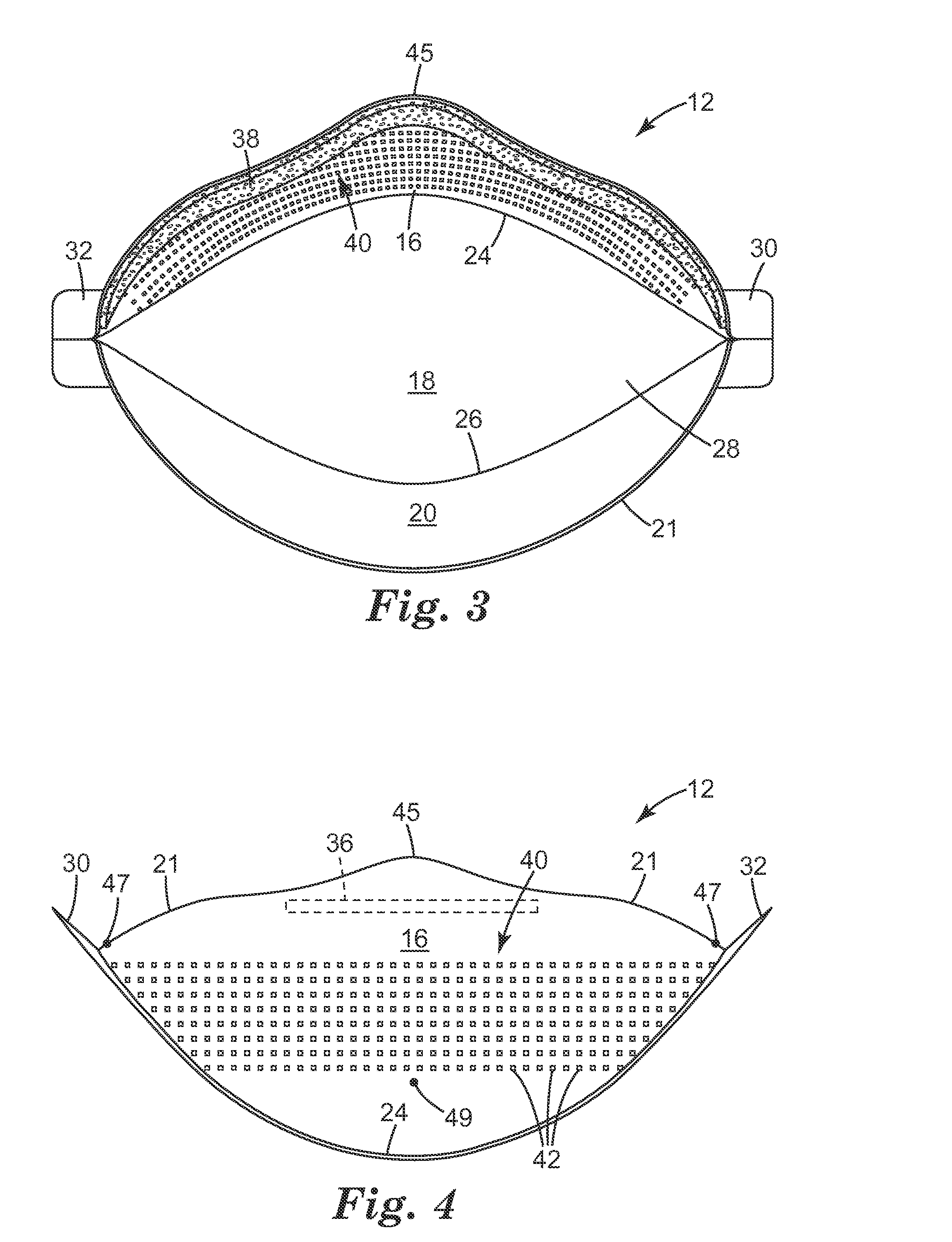Maintenance-free Anti-fog respirator
a respirator and anti-fog technology, applied in the field of maintenance-free anti-fog respirator, can solve the problems of inability to achieve a snug fit, inhalation of air into the wearer's breathing track, and difficulty in achieving a snug fit, so as to improve the fit and/or wearer comfor
- Summary
- Abstract
- Description
- Claims
- Application Information
AI Technical Summary
Benefits of technology
Problems solved by technology
Method used
Image
Examples
example 1
[0079]A 3M model 9322 maintenance-free respirator, available from the 3M Company, St. Paul, Minn., was modified to create a bond pattern in the sinus region that resembled the pattern shown in FIGS. 1-7. This respirator had a total sinus area of about 4,750 square mm. The bond pattern was created as follows:
[0080]The bond pattern was applied utilizing an ultrasonic welding plunge press that had a patterned anvil. The sinus region panel construction was located across the patterned anvil and was held in place using six locating dowels. The plunge press was then actuated, and the welding horn was lowered to compact the sinus region panel between the anvil and the horn. In this manner, the bond pattern was applied to the sinus region. The welding cycle was controlled by setting the weld time to 400 milliseconds (ms) to optimize the resulting bond pattern in the sinus region. Three percent (3%) of the total sinus region available to be bonded had its intrinsic structure altered by ultra...
examples 2-3
[0081]These examples were prepared as described above in Example 1 but the percent of the total area subjected to actual welding was increased such that Example 2 was welded at 5% of the total available surface area, and Example 3 was welded at 9% of such area.
example 1c
[0082]An unmodified 3M model 9322 respirator was used.
[0083]Examples 1-3 and 1C were subjected to the Pressure Drop Test set forth above. The results are shown below in Table 1.
TABLE 1Primary Filtering RegionSampleExample (Sinus Region)3M Brand 9322Measured1C123RespiratorPressure Drop14.919.922.529.426.2(mmH20)
[0084]The data set forth in Table 1 demonstrates that the pressure drop across the sinus region increases when the intrinsic structure of the mask body is altered there. The example 1C (unmodified sinus region) exhibited a pressure drop reading of 14.9 mmH20. This value increased as the bond pattern coverage area increased. In Example 3 the pressure drop increased across the sinus region to the extent the pressure drop of the sinus region was greater than the primary filtering region. The increase in pressure drop encourages the exhaled air to pass through the primary filtering region and accordingly may reduce the amount of eyewear lens fog.
[0085]This invention may take on va...
PUM
 Login to View More
Login to View More Abstract
Description
Claims
Application Information
 Login to View More
Login to View More - R&D
- Intellectual Property
- Life Sciences
- Materials
- Tech Scout
- Unparalleled Data Quality
- Higher Quality Content
- 60% Fewer Hallucinations
Browse by: Latest US Patents, China's latest patents, Technical Efficacy Thesaurus, Application Domain, Technology Topic, Popular Technical Reports.
© 2025 PatSnap. All rights reserved.Legal|Privacy policy|Modern Slavery Act Transparency Statement|Sitemap|About US| Contact US: help@patsnap.com



